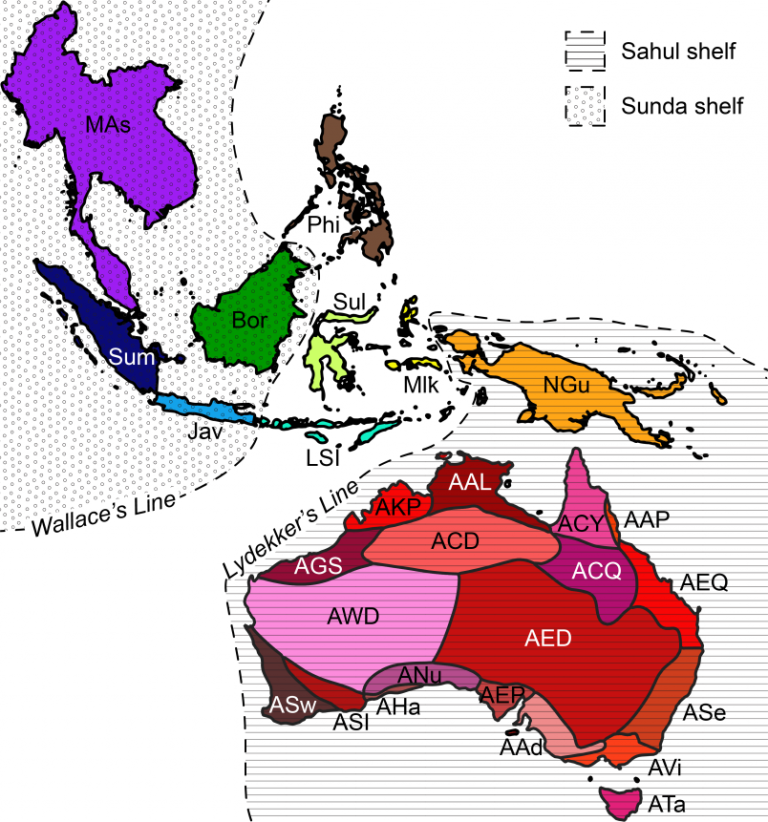Documenting Earth’s biodiversity is critical for understanding and conserving it. However, the question of how many species of plants are in Southeast Asia, and where they occur has long remained unanswered. This is particularly concerning for Southeast Asia; not only was Southeast Asia estimated to be one of the most biodiverse areas on Earth, the biodiversity is at a high risk of loss due to human activity. What’s more, this area is, evolutionarily speaking, one of Earth’s great natural experiments. Southeast Asia sits across the convergence of two continental shelves – the Sahul continental shelf, and the Sunda continental shelf (Fig. 1). These two shelves collided approximately 25 Mya, trapping a complex of crustal fragments between now known as “Wallacea”. This collision enabled plants and animals that had evolved in isolation to exchange between continental shelves for the first time in 20 million years. Understanding how this exchange effected the evolution of the region’s biota is a question that has fascinated scientists since the time of Alfred Wallace. But before we can understand the evolution or ecology of the region’s flora, or conserve it, we must first document it.

Checklists for some parts of Sunda, Sahul and Wallacea exist, but their completeness, currency and availability differ. Some are in hard copy form in books or journals, some are online, and some are unpublished. Many are not publicly available or are out of print. The hard copy formats are static and not up-to-date with respect to new taxonomic discoveries or revised taxonomic concepts. The taxonomies used in these lists also often differ, mostly due to their different publication dates, making comparison of taxa between regions difficult.
In a joined project between researchers at Universiti Brunei Darussalam, the Australian Tropical Herbarium and the University of Western Australia, Joyce et al. 2020 has produced the first preliminary checklist of flora for the region encompassing Sunda, Sahul and Wallacea. The list of vascular plants was compiled from 24 flora volumes, online databases and unpublished plot data, and each species is coded by country, island and continental shelf. From this list, we were able to show that the region comprises 60,415 species in 5,135 genera and 363 families of vascular plants; this confirms that species richness of Southeast Asia is comparable to that of the Americas. It also highlights areas in need of further documentation and taxonomic work.
A major caveat of this list is that it is a working checklist; this work has compiled all current knowledge of the floristic diversity of the region and standardised the taxonomy in a systematic way. However, there are undoubtedly improvements to be made with nomenclature, changing taxonomy and removing cultivated and invasive species. That being said, a major strength of this list is that it is digital and updateable; it is our hope that with collaboration with regional and group experts the list can be continually updated and improvements made. Nevertheless, this checklist provides a novel, baseline dataset that will hopefully prove useful for researchers studying the flora of this biogeographically important region of very high global biodiversity.
The link to the article and checklist can be found here:
Joyce E, Thiele K, Slik F, Crayn D (2020) Checklist of the vascular flora of the Sunda-Sahul Convergence Zone. Biodiversity Data Journal 8, e51094. doi:10.3897/BDJ.8.e51094.
Content by: Assoc. Prof. Dr Ferry Slik (Environmental and Life Sciences, Faculty of Science, UBD)

